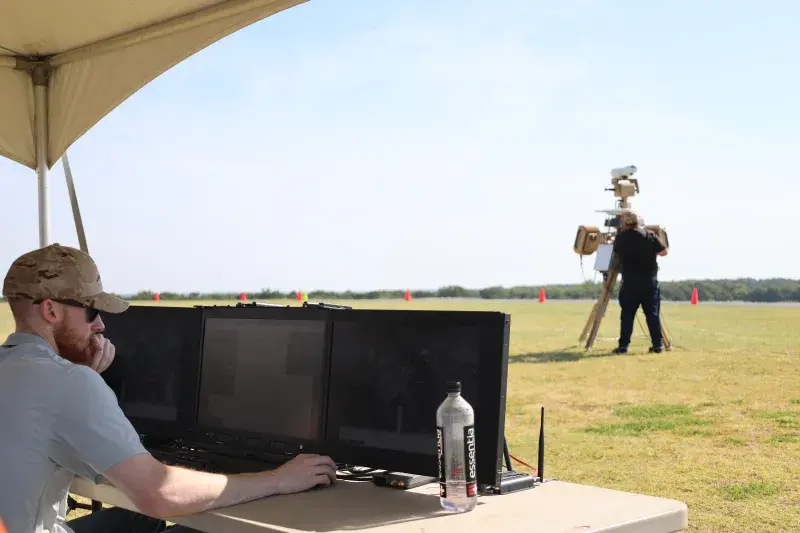The Science & Technology Directorate (S&T) of the US Department of Homeland Security has published high level information about the results of two programmes to test kinetic counter-UAS technologies and C-UAS systems capable of defending against drone swarm attacks.
The demonstration evaluating potential non-kinetic solutions capable of detecting, tracking, identifying, and countering swarms of small UAS that are being controlled remotely and emitting little or no radio frequency (RF) signals, noise, or emissions (“dark” drones) produced some positive results.
According to William Hatfield, counter-UAS innovation liaison for U.S. Customs and Border Protection’s (CBP) C-UAS programme: “Two of the radars recorded impressive results in their ability to detect dark drone swarms,” said Hatfield. “I was also impressed that an array of technologies was demonstrated that fills the need for a ‘system of systems’ approach that provides multiple detection capabilities to address every possible technology employed by drones.
“And, for the most part, the solutions were easy to deploy and monitor and their graphical user interfaces were very intuitive,” he added.
Another demonstration, held in July at Camp Grafton South in North Dakota, collected information on the collateral effects of kinetic mitigation systems. S&T partnered with UND, which is part of the FAA’s Center of Excellence for Unmanned Air Systems. “The information and data collected during this event will assist S&T in understanding, measuring, and minimizing collateral effects as kinetic C-UAS mitigation solutions are applied to Department of Homeland Security missions,” said S&T Program Manager Andy Myers.
“Initial observations provided a basic understanding of collateral damage effects,” said a press statement. “Further analysis of the results will provide a basic methodology for measuring collateral effects. The primary outcomes for the Department of Homeland Security (DHS) are to develop an understanding of the kinetic mitigation capabilities of current counter-drone technologies, the inherent risks of using those capabilities, and potential damage that may result from its use.”
UND, in collaboration with the NPUASTS team, delivered its report in late October, providing S&T its first analysis of the technologies demonstrated and their collateral effects. According to Myers: “We now have the foundations for building a methodology for how we measure collateral effects and conducting a risk analysis for the impacts of using a given technology in a certain location, such as over a river.”
(At right, a technician aims a drone detection system while a second technician scans monitors for any drone activity in the area during a demonstration in Oklahoma. Photo credit: Oklahoma State University.)
For more information
Feature Article: S&T Tests Cutting-Edge Counter-Drone Technology | Homeland Security (dhs.gov)




